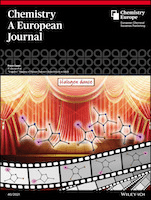
CHEMISTRY-A EUROPEAN JOURNAL
Scope & Guideline
Empowering Discovery in Organic Chemistry
Introduction
Aims and Scopes
- Organic Synthesis and Catalysis:
The journal consistently features research on organic synthesis, including novel synthetic methodologies, asymmetric catalysis, and the development of new catalytic systems, highlighting advancements in reaction conditions and mechanisms. - Materials Chemistry:
A significant portion of the journal's publications revolves around the design and characterization of new materials, particularly those with applications in energy storage, catalysis, and optoelectronics, showcasing innovative approaches in the synthesis of metal-organic frameworks (MOFs), polymers, and nanomaterials. - Photochemistry and Photophysics:
Research exploring the interaction of light with chemical systems is prominently featured, with studies on photoredox catalysis, light-driven reactions, and the development of new photonic materials, emphasizing their potential applications in solar energy conversion and phototherapy. - Biochemistry and Chemical Biology:
The journal includes papers that bridge chemistry and biology, focusing on the synthesis of biomolecules, understanding enzyme mechanisms, and developing new therapeutic agents, reflecting a growing emphasis on the chemical basis of biological processes. - Theoretical and Computational Chemistry:
Papers employing computational methods to understand chemical phenomena are common, with studies that provide insights into reaction mechanisms, molecular interactions, and material properties, enhancing the understanding of complex chemical systems.
Trending and Emerging
- Sustainable and Green Chemistry:
There is a growing emphasis on sustainable practices, including the development of eco-friendly synthetic methods, recycling strategies, and the use of renewable resources in chemical processes, aligning with global sustainability goals. - Electrocatalysis and Energy Conversion:
Research in electrocatalysis, particularly for CO2 reduction and hydrogen evolution, has gained momentum, driven by the need for efficient energy conversion technologies and the quest for sustainable fuel sources. - Advanced Materials for Energy Applications:
The journal increasingly features studies on advanced materials, such as MOFs, covalent organic frameworks (COFs), and nanomaterials, particularly for applications in energy storage, conversion, and environmental remediation. - Machine Learning and Computational Approaches:
The integration of machine learning and computational chemistry in predicting chemical behavior and optimizing synthetic pathways is becoming more prevalent, highlighting the role of data-driven methodologies in modern research. - Bioorthogonal Chemistry and Drug Delivery Systems:
Research focused on bioorthogonal reactions and advanced drug delivery systems is on the rise, reflecting the growing interest in targeted therapeutics and precision medicine.
Declining or Waning
- Traditional Organometallic Chemistry:
Research focused on classical organometallic complexes and their reactivity has decreased, possibly due to the rise of more versatile and less toxic alternatives, as well as a shift towards more sustainable and environmentally friendly catalytic systems. - Conventional Catalytic Processes:
There seems to be a decline in the exploration of conventional catalytic processes without innovation in terms of sustainability or efficiency, as the field increasingly favors novel catalytic strategies that leverage non-traditional mechanisms or materials. - Synthesis of Small Organic Molecules:
The focus on small organic molecule synthesis for traditional applications has waned, with a growing emphasis on complex molecules and biomolecules, reflecting a shift in research priorities towards more challenging synthetic targets. - Inorganic Solid-State Chemistry:
Although still relevant, the volume of publications related to classical inorganic solid-state chemistry appears to be decreasing, as researchers increasingly explore hybrid materials and nanostructured systems with tailored properties for specific applications.
Similar Journals

SYNTHESIS-STUTTGART
Advancing the Frontiers of Organic Chemistry and Catalysis.SYNTHESIS-STUTTGART
Published by the esteemed Georg Thieme Verlag KG, SYNTHESIS-STUTTGART stands as a vital resource in the field of Chemistry, specifically focusing on Organic Chemistry and Catalysis. With an impressive publication history dating back to 1970 and continuing through 2024, it serves as a platform for innovative research and developments in synthetic methodologies and their applications. The journal holds a significant impact factor, reflecting its influence within the academic community, and is recognized in the Scopus rankings as a reputable source in its categories, with a rank of #99/211 in Organic Chemistry and #43/68 in Catalysis. Researchers, professionals, and students alike can benefit greatly from its content, which upholds rigorous peer-review standards and contributes to the global discourse in these critical scientific domains.
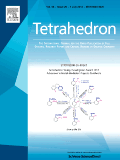
TETRAHEDRON
Exploring the molecular universe since 1957.TETRAHEDRON, published by Pergamon-Elsevier Science Ltd, is a leading peer-reviewed journal that has been pivotal in advancing the fields of Biochemistry, Drug Discovery, and Organic Chemistry since its inception in 1957. With an ISSN of 0040-4020 and an E-ISSN of 1464-5416, this journal provides a platform for the dissemination of cutting-edge research and innovative methodologies that contribute significantly to the scientific community. Recognized for its rigorous editorial standards, TETRAHEDRON has been categorized in the Q3 quartile for 2023 across its relevant fields, reflecting its solid impact within the scientific sphere. Despite the current absence of Open Access options, the journal continues to engage a diverse readership, offering invaluable insights and advancements that fuel both academic and industrial applications. With an ongoing commitment to excellence, TETRAHEDRON remains an essential resource for researchers, professionals, and students aiming to stay at the forefront of chemistry and biochemistry research.
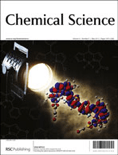
Chemical Science
Connecting Minds, Inspiring ChemistryChemical Science, published by the esteemed Royal Society of Chemistry, is a leading open-access journal that has been a pivotal platform for disseminating high-quality research in the field of chemistry since its inception in 2010. With an impressive Impact Factor and ranked in the Q1 category of Chemistry (miscellaneous) and holding a distinguished rank of #34 out of 408 in General Chemistry according to Scopus, it is widely recognized for its rigorous peer-review process and innovative contributions to the discipline. The journal embraces a global readership by providing an open-access model since 2015, thereby making vital scientific advancements accessible to researchers, professionals, and students alike. Covering various branches of chemistry, Chemical Science aims to publish original research articles, reviews, and communications that advance our understanding and application of chemical sciences. With its commitment to excellence and its continued relevance in a rapidly evolving field, Chemical Science is an indispensable resource for anyone engaged in chemistry research and education.
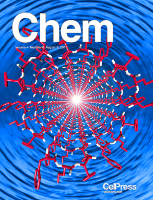
Chem
Exploring the Depths of Biochemistry and BeyondChem, published by CELL PRESS, is a renowned academic journal that has rapidly established itself as a leading platform for cutting-edge research in diverse areas such as biochemistry, chemical engineering, materials chemistry, and environmental chemistry. Released under the ISSN 2451-9294, this esteemed journal has achieved an impressive Q1 category ranking across multiple disciplines in 2023, highlighting its significant impact and prominence within the academic community. With a strong focus on innovative studies and interdisciplinary approaches, Chem fosters a vibrant dialogue among researchers, professionals, and students, making it an indispensable resource for those seeking to advance their knowledge and contribute to the evolving field of chemistry. As an open access journal, it aims to democratize knowledge, ensuring that critical research is accessible to a global audience. With its headquarters based in Cambridge, MA, it continues to lead the charge in the dissemination of pivotal findings that shape our understanding of chemical sciences.
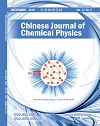
CHINESE JOURNAL OF CHEMICAL PHYSICS
Innovating Methodologies in Chemical PhysicsChinese Journal of Chemical Physics, published by the Chinese Physical Society, serves as a pivotal platform for advancing the field of chemical physics, encompassing groundbreaking research and innovative methodologies since its inception in 2000. With an ISSN of 1674-0068 and E-ISSN of 2327-2244, the journal has established itself within the academic community, reflected in its 2023 classification as Q3 in Physical and Theoretical Chemistry and a Scopus rank of #142 out of 189, representing the 25th percentile in this competitive field. Although it does not currently operate as an open-access publication, its commitment to disseminating pivotal scientific research continues to attract scholars and professionals alike. The journal aims to bridge the gap between theoretical principles and practical applications in chemical physics, thereby fostering collaboration and innovation. By contributing significantly to the discourse in this dynamic domain, the Chinese Journal of Chemical Physics remains an essential resource for researchers, professionals, and students eager to stay abreast of contemporary developments.

CCS Chemistry
Showcasing Excellence in Chemical Science and InnovationCCS Chemistry, published by the esteemed Chinese Chemical Society, is a leading open-access journal dedicated to advancing the field of chemistry. Since its inception in 2019, the journal has rapidly gained recognition, achieving a remarkable impact factor that places it in the prestigious Q1 category in Chemistry (Miscellaneous) as of 2023. With a Scopus ranking of #41 out of 408 in General Chemistry, CCS Chemistry represents the top 10th percentile in its category, reflecting its commitment to high-quality research and innovation. The journal serves as a vital platform for researchers and professionals to share their findings, showcase cutting-edge methodologies, and engage with the latest developments in various chemistry subfields. Accessible to a global audience, CCS Chemistry ensures that groundbreaking research is available without barriers, making it an indispensable resource for students and academics aiming to stay at the forefront of chemical sciences. For further details, submissions, and access to published articles, please visit the journal's website.

HELVETICA CHIMICA ACTA
Empowering Researchers with Peer-Reviewed ExcellenceHELVETICA CHIMICA ACTA, published by WILEY-V C H VERLAG GMBH, stands as a pivotal journal in the fields of chemistry and chemical research. Established in 1918, this esteemed journal spans a diverse array of topics, including biochemistry, catalysis, drug discovery, inorganic and organic chemistry, as well as physical and theoretical chemistry. With influence reflected in its noteworthy Q2 and Q3 quartile rankings across these categories as of 2023, HELVETICA CHIMICA ACTA continues to capture the interest of the global scientific community. Although not an open-access journal, it remains accessible through various academic institutions, ensuring broad reach and collaboration opportunities. Researchers, professionals, and students alike will find its meticulously peer-reviewed articles critical for advancing knowledge and fostering innovation within the chemical sciences. As the journal converges toward 2024, it remains committed to publishing high-quality, impactful research that supports the evolution of chemistry across its multifaceted disciplines.
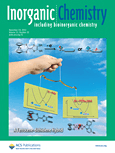
INORGANIC CHEMISTRY
Connecting Researchers to the Heart of Inorganic ChemistryInorganic Chemistry, published by the American Chemical Society, stands at the forefront of the field of inorganic and physical chemistry, boasting an impressive impact in the academic community with a 2023 classification in the Q1 quartile across multiple categories including Inorganic Chemistry and Miscellaneous Chemistry. Since its inception in 1962, this esteemed journal has been a crucial platform for disseminating groundbreaking research, innovative methodologies, and comprehensive reviews integral to understanding the complex behaviors of inorganic materials. With a ranking of #12 out of 79 in Inorganic Chemistry and #37 out of 189 in Physical and Theoretical Chemistry according to Scopus metrics, Inorganic Chemistry has established itself as a premier destination for researchers, professionals, and students alike, eager to stay abreast of pivotal developments and trends in the discipline. Despite being a subscription-based journal, its esteemed reputation and critical contributions make it essential for anyone engaged in the exploration of inorganic chemical phenomena. As it prepares to converge into a new era by 2024, the journal continues to embody excellence and innovation, fostering a dynamic exchange of ideas essential for advancing this vibrant area of science.

COMMENTS ON INORGANIC CHEMISTRY
Unveiling Innovations in Inorganic ResearchCOMMENTS ON INORGANIC CHEMISTRY is a prestigious academic journal published by Taylor & Francis Ltd, specializing in the dynamic field of inorganic chemistry. With an impressive impact factor placing it in the Q1 category, this journal ranks #6 out of 79 in its field, reflecting its high influence and contribution to the discipline, with a remarkable percentile ranking of 93rd. Since its inception in 1981 and spanning publications until 2024, this journal serves as a crucial platform for researchers, professionals, and students to disseminate groundbreaking findings, review articles, and discussions on contemporary topics in inorganic chemistry. Although it is not an Open Access journal, the rigorous peer-review process ensures the publication of high-quality research. By bridging theoretical and practical aspects of inorganic chemistry, COMMENTS ON INORGANIC CHEMISTRY remains an essential resource for advancing knowledge and fostering innovation within the scientific community.

Chemical Physics Reviews
Connecting Theory and Experiment in Chemical ScienceChemical Physics Reviews is a premier academic journal published by AIP Publishing, focusing on the dynamic interplay between chemistry and physics. With its E-ISSN: 2688-4070, the journal is committed to advancing the field through high-quality reviews that address key challenges, emerging trends, and innovative applications in chemical physics. Although currently not open access, it offers valuable insights for both researchers and practitioners seeking to deepen their understanding of theoretical and experimental aspects of chemical interactions. The journal serves as a vital resource for professionals and students alike, ensuring they stay abreast of the latest developments in this interdisciplinary field. As a part of AIP Publishing’s esteemed catalogue, Chemical Physics Reviews plays an essential role in shaping the discourse and fostering collaboration within the global scientific community.